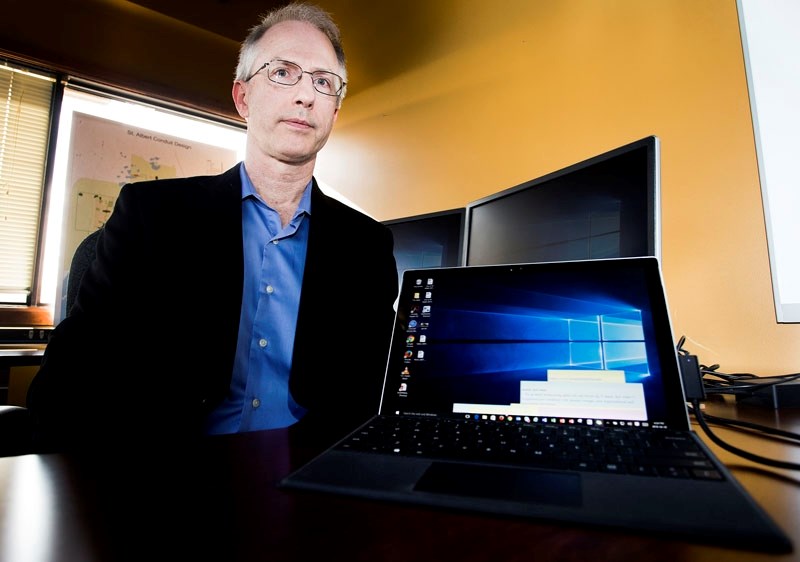By Kevin Ma
I leave the office in a grouchy mood most days. Not just because I'm working late, but because I see so many computers here left on overnight.
Sometimes it's a screensaver. Other times, not even that. But in most cases, I can walk up to any random station here, mash the keyboard, and find out that the computer has been left at least partially on all night, despite there not being anyone here to use it.
And that's an expensive waste. A 2004 report by the Rocky Mountain Institute suggests that a typical desktop computer left on all year uses about US$48.27 of electricity. Turn on sleep mode and turn off the computer at the end of the day, and that bill drops to $5.77 – an 88 per cent savings.
Despite the fact that most new computers come with sleep modes automatically enabled, about 75 to 85 per cent of businesses don't use those energy saving settings at all, says Mike Walker, president of AlterAction Inc. (which works on IT energy efficiency issues for the U.S. Energy Star program).
Most modern computers use about 40 W of electricity, or about as much as an old incandescent bulb, Walker says.
"You wouldn't leave your office building, I hope, with every single light on, but in a lot of organizations that run a lot of network computers, they're doing exactly that," he says.
"That's pretty wasteful."
Many homes will have multiple devices that draw power 24/7, even when turned off. These include computers, TVs, printers, chargers, routers and other such gadgets. Godo Stoyke of Carbon Busters calls these devices power vampires.
Vampires can account for five to 10 per cent of the electricity use in your home, reports Natural Resources Canada. If Canadians could reduce the amount of power these devices drew when not in use to about 1 W each, they'd save about $392 million and prevent up to 1.99 megatonnes of greenhouse gas emissions each year – equivalent to planting about 51 million trees.
Finding vampires is easy, Stoyke says: either use a watt meter (available from the Edmonton Public Library or most hardware stores) or touch the device's power brick – if it's warm and it's off, it's sucking power.
Slaying them is even easier, he continues: either unplug them or hook them to a power bar that you shut off when you're not using them.
But that can be really inconvenient with some devices such as set-top boxes, which often take several minutes to boot up, Walker says.
A typical 40-to-60 watt computer will use just one or two watts of power in sleep mode, which is pretty darn close to off, Walker notes.
Enable sleep mode on a typical desktop computer and you'll save about US$200.35 and prevent some 1.3 tonnes of emissions in three years, Walker estimates – equivalent to planting about 33 trees. Drug giant Glaxosmithkline is now saving about $1 million a year just by using sleep mode on its computers, the EPA notes.
You can also save energy by buying better gadgets. Stoyke notes that Energy Star-rated TVs will typically use less than 1 W of power when not in use, while laptop computers use a fraction of the power used by desktops.
That's why the City of St. Albert is replacing its desktop computers with laptops and tablets whenever possible, says Gordon Coulman, director of IT services for the city. Not only do portable computers use less power – 90 W compared to 250, in some cases – but they also make workers more mobile. When a water main broke on St. Anne St. last year, for example, many staffers were able to just pick up their laptops, change buildings, and keep working.
In addition to enabling sleep features on all computers, the city has also started ditching the many small printers it had and replacing them with a smaller number of Energy Star photocopiers, Coulman says.
"That's been saving us a tonne of money," he says, both in terms of electricity, maintenance, and toner.
Sleep mode is just about as good as off when it comes to energy conservation, Walker tells me, but off is better. That makes me a bit less miffed about the computers here, but I'm still going to shut this one off before I go home.
Carbon Tracker
Step: Use the sleep mode on your computer.
Difficulty: Ridiculously easy.
Cost: Saves you $72.19 a year.
Payback Period: Instant.
Carbon Saved: 423 kg/yr.
The Carbon Challenge
The Carbon Challenge will profile different ways you can shrink your carbon footprint and (usually) save money every second week. <br />Got a carbon question? Drop me a line at [email protected].




